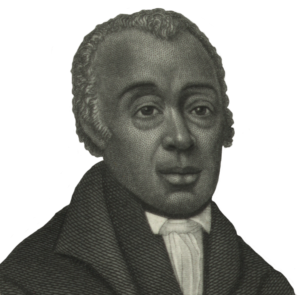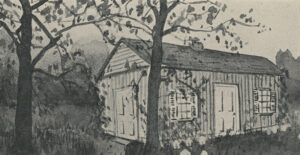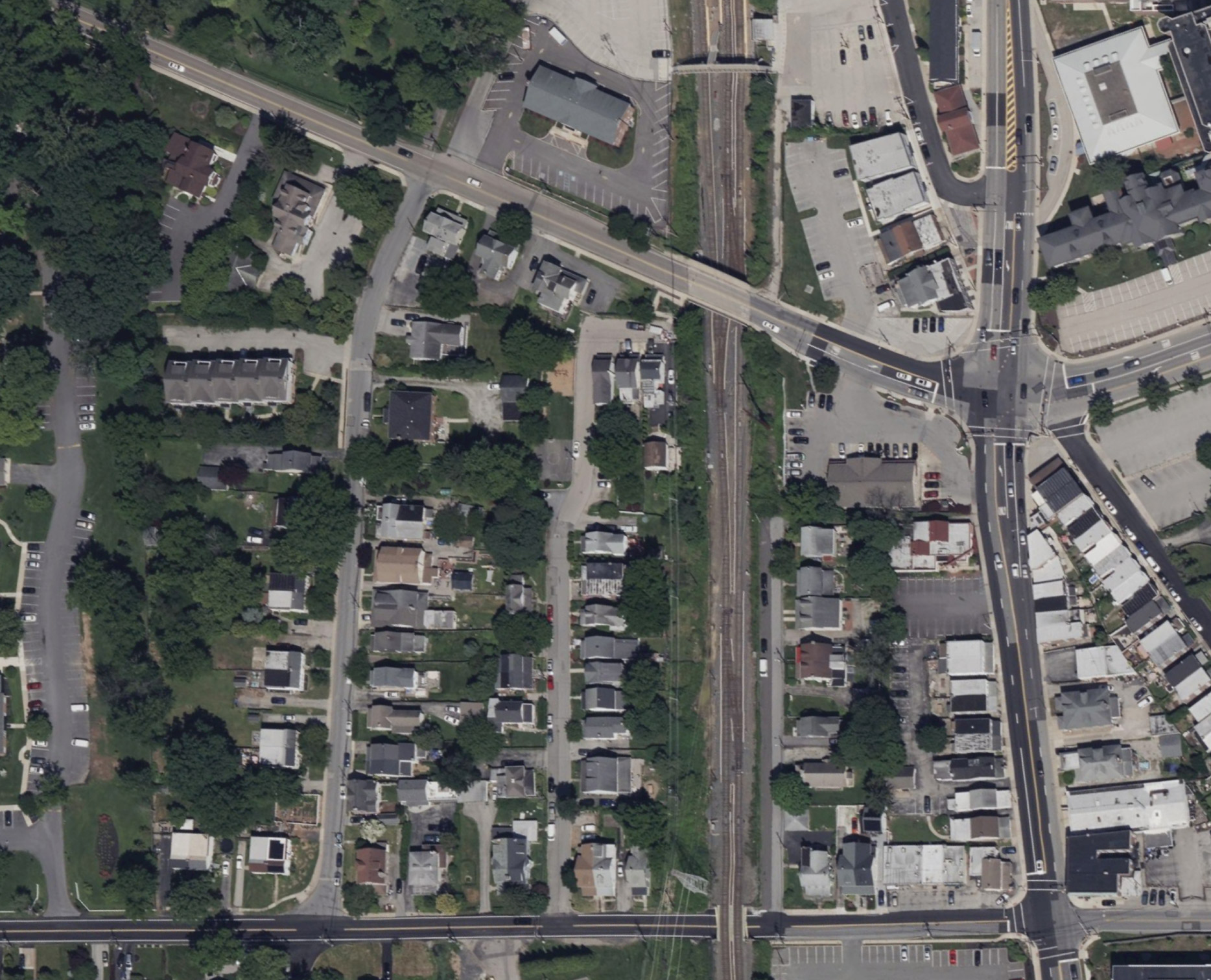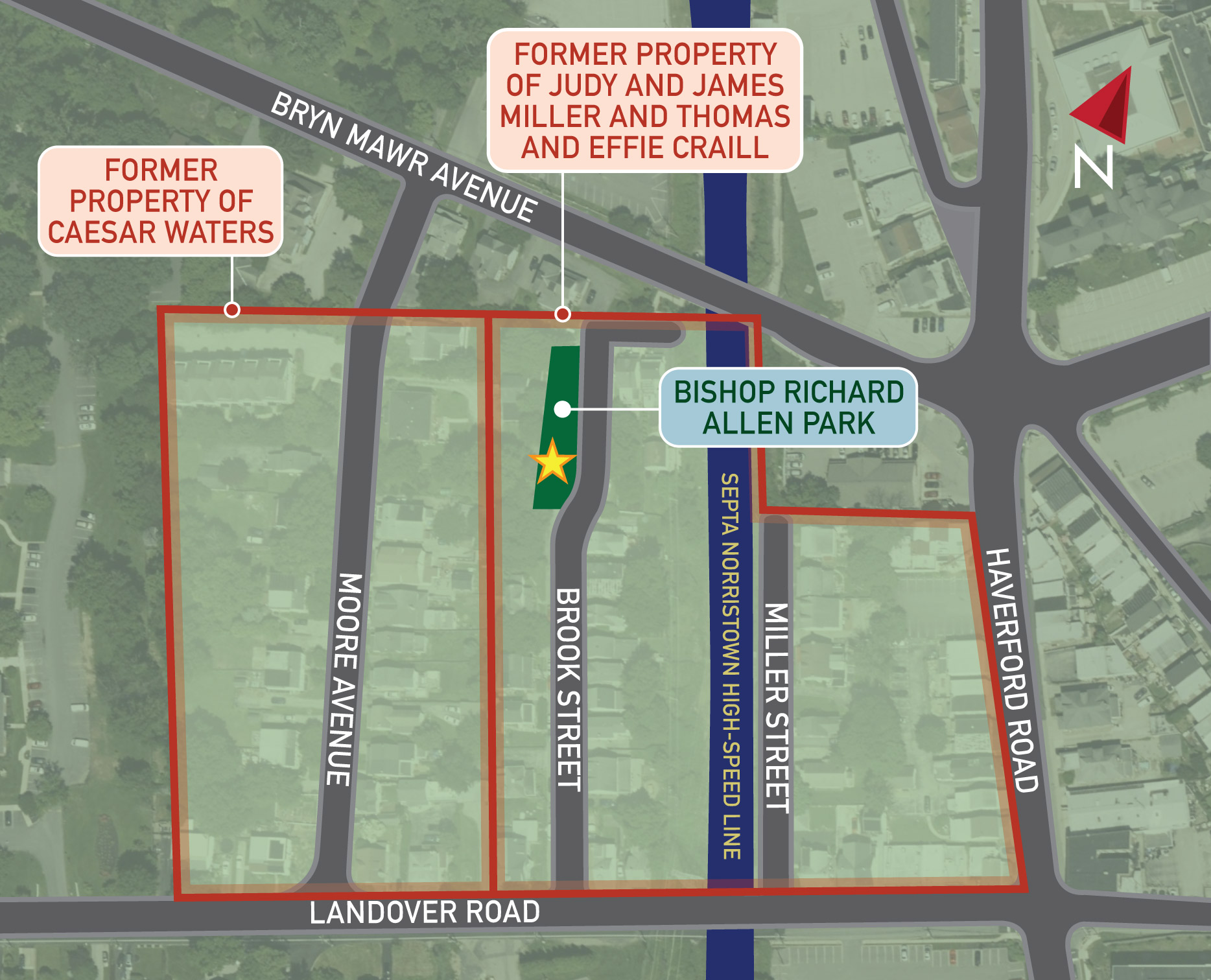The Story of the Man and the Place He Visited
 Richard Allen (1760–1831) was one of the most influential Black leaders of the late 18th and early 19th centuries. In 1794, Mother Bethel African Methodist Episcopal (A.M.E.) Church was consecrated in Philadelphia, the first church building within the A.M.E. denomination. Allen was elected the first bishop of the A.M.E. church in 1816. Today, there are 7,000 A.M.E. congregations worldwide.
Richard Allen (1760–1831) was one of the most influential Black leaders of the late 18th and early 19th centuries. In 1794, Mother Bethel African Methodist Episcopal (A.M.E.) Church was consecrated in Philadelphia, the first church building within the A.M.E. denomination. Allen was elected the first bishop of the A.M.E. church in 1816. Today, there are 7,000 A.M.E. congregations worldwide.
The First Black Property Owners in Radnor Township
Bishop Richard Allen Park sits near a property line that once separated the first two pieces of land that Black individuals owned in Radnor Township. Formerly enslaved Black people named Caesar Waters, Thomas Craill, and Judy Miller owned these lots that were located in what is now the Fifth Ward of Radnor Township. Charles Humphreys, a wealthy white landowner and politician from Haverford Township, enslaved Waters, Craill, Miller, and six other Black people including women named Nancy, Dolly, and Nanny, a boy named Tommey, and Miller’s two daughters, Alice and Fanny. Humphreys forced them to work his land and serve him and his sisters Elizabeth and Rebecca for many years.
Humphreys died in 1786, and in his will he ordered his executors to immediately free Nanny and free Caesar, Thomas, and Judy six months later. The will also stipulated that three acres of land in Radnor would be given to Caesar and seven acres adjoining it to Thomas and Judy. Caesar Waters eventually married a Black woman named Phebe and the couple had a daughter named Charlotte. Thomas Craill married a Black woman named Effie, and Judy married a Black man named James Miller. The properties that they, their spouses, and descendants owned are outlined in red on the map below. Miller Street is believed to be named for the family Judy created with her husband James Miller. The people who lived in the space where this park is now located survived the cruelty of slavery and formed new lives and relationships when they became free, contributing to Radnor Township and the surrounding area. In this park, everyone can remember and honor them.
View the approximate locations of the Waters and Miller/Craill properties in the context of present-day streets and landmarks by moving the slider over the image:
When Richard Allen Visited Radnor
In 1784, Richard Allen was a 24-year-old itinerant preacher when he walked west from New Jersey and arrived in Radnor Township. He wrote: “I walked until my feet became so sore and blistered the first day, that I scarcely could bear them to the ground.” Allen came to the home of Caesar Waters and his wife Phebe, who welcomed him and gave him a place to stay. After chatting awhile, they asked the young preacher to stay for tea. A delighted but weary Allen agreed to stay but found that he could not move from his chair to the dinner table. “They brought the table to me,” a grateful Allen remembered. Of Caesar, Allen wrote: “I found him and his wife very kind and affectionate to me… Never was I more kindly received by strangers that I had never before seen, than by them.”

During his stay, Richard Allen preached to the congregation at Radnor United Methodist Church, which was founded the year before. Allen noted that the congregation was of “mixed persuasions,” meaning it contained people of varied races. Allen stayed several weeks at the Waters family’s home, a short distance from this park. About his time here he said, “many souls were awakened, and cried aloud to the Lord to have mercy upon them.” Allen made a profound impression on all of them, and one individual gifted him a horse for the continuation of his journey.
Allen returned to Radnor in the autumn of 1785 and stayed with George Gyger, founder of the Radnor Methodist Episcopal (later United Methodist) Church. Beginning in 1783, members of the church met and worshipped in a small one-room log meeting house on Conestoga Road in “Methodist Hill,” a high point of land now known as Garrett Hill. That structure is depicted in the early 20th century artist’s rendering above. Officials of the Eastern PA Conference of the United Methodist Church transferred ownership of the church property and newer stone building, built circa 1833, to St. John African Methodist Episcopal Church of Wayne in June, 2021.
Sources & Further Reading
Allen, Richard. The Life Experience and Gospel Labors of the Rt. Rev. Richard Allen, originally published in Philadelphia in 1833, pp. 9-12. Read it on archive.org
Cummin, Katharine Hewitt. “The Blacks in Radnor Before 1850.” The Bulletin of the Radnor Historical Society, 1973. Read it on radnorhistory.org (3.7 MB PDF)
Cummin, Katharine Hewitt. A Rare and Pleasing Thing: Radnor Demography (1798) and Development. Philadelphia: Owlswick Press, 1977, pp. 411-417 (Lot 113 and Lot 114). Read this portion of the book on radnorhistory.org (1.4 MB PDF)
Will of Charles Humphreys, Number 3759, 1786, Chester County Archives.
Orphans Court Files for Ceasar Waters, August 1, 1829, Number 1193, Delaware County Archives.
1780 Chester County Slave Register, Chester County Archives.
Newman, Richard S. Freedom’s Prophet: Bishop Richard Allen, the AME Church, and the Black Founding Fathers. New York: New York University Press, 2009. Read it on archive.org
Patterson, Emma C. “Your Town and My Town,” Suburban & Wayne Times. Series of articles on the history of Radnor Methodist Church published in November and December, 1950. Read them on radnorhistory.org
Coleman, John W. “Radnor UMC gives historic church to AME congregation.” Eastern Pennsylvania Conference, United Methodist Church, June 10, 2021. Read the article here
Image Credits
Bishop Richard Allen Portrait: Detail from lithograph entitled Bishops of the A.M.E. Church by John H.W. Burley, published in 1876 by J.H. Daniels. Retrieved from the Library of Congress. View it on loc.gov
Original Radnor Methodist Church image: From “One Hundred and Twenty-fifth Anniversary, Radnor Methodist Episcopal Church,” published 1908. Reproduced from a description given by Mrs. Mary Clemmans and Miss Hannah G. Cline.
Background aerial imagery of property diagram courtesy of Apple Maps.
The interpretive sign in Bishop Richard Allen Park was dedicated Sunday, June 25, 2023. It was made possible thanks to the efforts and contributions of:
Tammy Cohen, Director of Parks & Recreation, Radnor Township
Greg Prichard, Prichard Design & History Studio
Reverend Carolyn Cavaness, Bethel AME Church of Ardmore
Professor Anne Minicozzi, Villanova University
Colin McCrossan, MA, Villanova University


